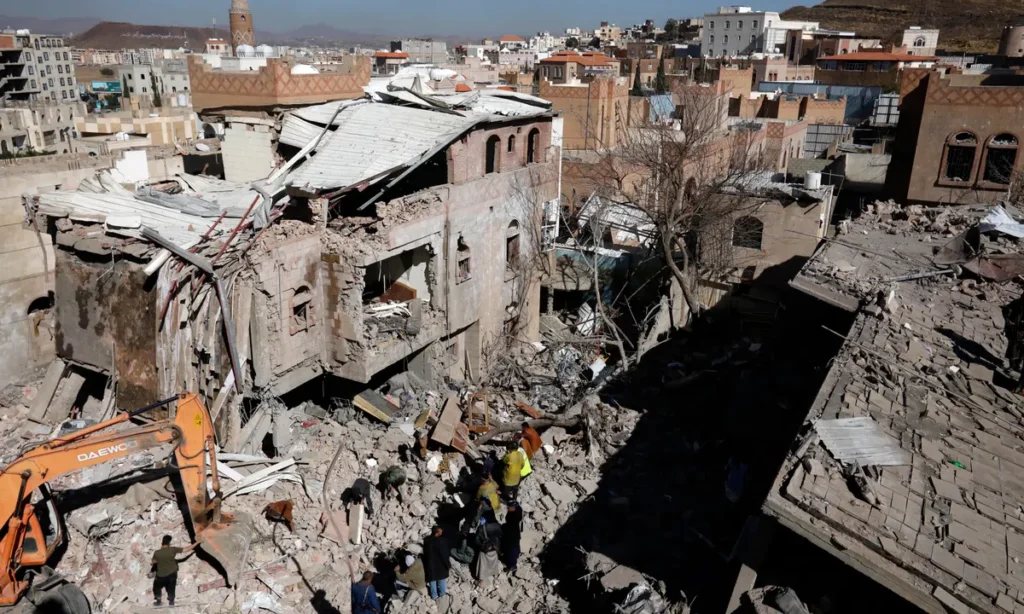In a significant development, US forces conducted airstrikes against an Iran-backed militia in Iraq. The targets included the headquarters of Kataib Hezbollah, a training facility, and storage space for missiles and drones, as reported by Bloomberg. These precision strikes were a direct response to a series of escalatory attacks against US and Coalition personnel in Iraq and Syria by Iranian-sponsored militias, according to an official statement from the US Central Command. The operation took place concurrently with the United States and the United Kingdom launching a second round of joint military strikes on Yemen’s Huthis. These strikes come in the wake of the Huthis’ continued attacks on Red Sea shipping, raising concerns about the broader implications of the growing crisis in the Middle East.
In Iraq, the US airstrikes targeted facilities used by Kataib Hezbollah, but the US Central Command noted that these locations were also utilized by other militant outfits. Defense Secretary Lloyd Austin emphasized the necessity of these strikes to disrupt and degrade the capabilities of the Huthis and other groups, asserting that the precision strikes were a measured response to escalating threats against US and Coalition personnel.
Simultaneously, the joint US-UK military strikes on Yemen’s Huthis aimed to address the rebels’ persistent attacks on international and commercial shipping, along with naval vessels transiting the Red Sea. The Huthis, who began targeting Red Sea shipping in November, claimed their actions were in support of Palestinians in Gaza during the Israel-Hamas war. This move further complicates an already tense situation in the Middle East, with fears of a broader conflict involving Iran.
The recent airstrikes against the Huthis in Yemen were a continuation of earlier military actions by the US and the UK. The joint statement from the two countries, along with support from others, indicated that the precision strikes sought to disrupt and degrade the capabilities the Huthis use to threaten global trade and the lives of mariners.
The targets of these strikes included missile systems and launchers, air defense systems, radars, and deeply buried weapons storage facilities. The Huthis, designated as a terrorist organization by certain countries, have declared US and British interests as legitimate targets. This ongoing cycle of military actions and counter-actions raises concerns about the potential for a wider regional conflict.
The situation is intertwined with the Israel-Hamas war, which has sparked a series of events leading to increased hostilities in the Middle East. The Huthis’ attacks on Red Sea shipping are seen as part of this broader context, posing challenges for international efforts to maintain stability in the region.
As the tensions escalate, there are fears of more widespread economic consequences. The disruptions to shipping through the Red Sea are already affecting global trade, with potential impacts on consumer prices and economic growth. The European Union, facing the risk of surging consumer prices and slowing growth due to these disruptions, is closely monitoring the situation.
In response to the Huthis’ attacks, Britain plans to announce new sanctions targeting Houthi financing of shipping attacks in the Red Sea. The international community is grappling with how to address the complex web of conflicts and interests in the region, with an eye on preventing further destabilization.
The coming days will likely see heightened diplomatic efforts to defuse tensions and find a sustainable path towards peace. The interconnected nature of the conflicts in Iraq, Yemen, and the broader Middle East underscores the need for a comprehensive and coordinated approach to address the root causes of the crisis and prevent further escalation.
